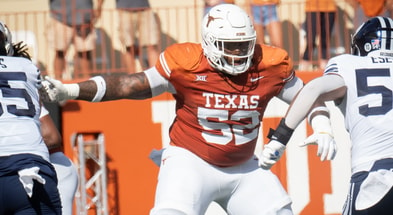Texas' 18 athletic programs post high marks in APR
The University of Texas has produced another round of impressive returns in the latest Division I Academic Progress Rate (APR) Institutional Report, which was released on April 25 by the NCAA.
[Get Inside Texas Plus for just $29.99 until 8/31/23!]
Implemented in 2003 as part of an ambitious academic reform effort in Division I, the Academic Progress Rate holds member institutions accountable for the academic progress of their student-athletes through a team-based metric that accounts for the eligibility and retention of each student-athlete for each academic term.
Teams must earn a four-year average APR of 930 to compete in NCAA championships.
Every Longhorns program exceeded that requirement and 13 of the 18 separate sports either matched or improved on their four-year, multi-year APR with their production in the 2021-22 academic year.
The APR is calculated as follows:
- Each student-athlete receiving athletically related financial aid earns one point for staying in school and one point for being academically eligible.
- A team’s total points are divided by points possible and then multiplied by 1,000 to equal the team’s Academic Progress Rate.
- In addition to a team’s current-year APR, its rolling four-year APR is also used to determine accountability.
Texas men’s programs returning perfect APR scores of 1,000 for the 2021-22 academic year were:
- Basketball, which has a multi-year score of 979
- Golf, multi-year score of 994
- Tennis, multi-year score of 993
On the women’s side, perfect APR scores of 1,000 for 2021-22 were:
- Tennis, which has a multi-year score of 1,000
- Volleyball, multi-year score of 989
- Cross Country, multi-year score of 1,000
- Golf, multi-year score of 1,000
- Swimming and Diving, multi-year score of 994
- Soccer, multi-year score of 1,000
- Softball, multi-year score of 997
Other sports that matched or improved on their four-year, multi-year score were:
- Baseball, which produced a score of 982 in 2021-22 and a multi-year score of 981
- Football, a 2021-22 score of 983 and a multi-year score of 974
- Men’s Swimming and Diving, a 2021-22 score of 994 and a multi-year score of 988
The five sports that did not improve in 2021-22 over its four-year score were:
- Men’s Track, which produced a score of 955 in 2021-22 and a multi-year score of 976
- Men’s Cross Country, a score of 937 in 2021-22 and a multi-year score of 979
- Women’s Track, a score of 993 in 2021-22 and a multi-year score of 996
- Women’s Basketball, a score of 979 in 2021-22 and a multi-year score of 995
- Women’s Rowing, a score of 985 in 2021-22 and a multi-year score of 992
The APR was established when Division I presidents and chancellors sought a more timely assessment of academic success at colleges and universities. At the time, the best measure was the graduation rate calculated under the federally mandated methodology that was based on a six-year window and did not take transfers into account.
The APR system includes rewards for superior academic performance and penalties for teams that do not achieve certain academic benchmarks. Data is collected annually, and results are announced in the spring.
While the APR is intended as an incentive-based approach, it does come with a progression of penalties for programs that under-perform academically over time.
[Get Inside Texas Plus for just $29.99 until 8/31/23!]
The Division I Committee on Academics (CoA) oversees the Academic Progress Rate as part of its responsibilities with the Academic Performance Program. The CoA sets policies and recommends legislative changes to the Division I Board of Directors which has the final say on changes in Division I.
























